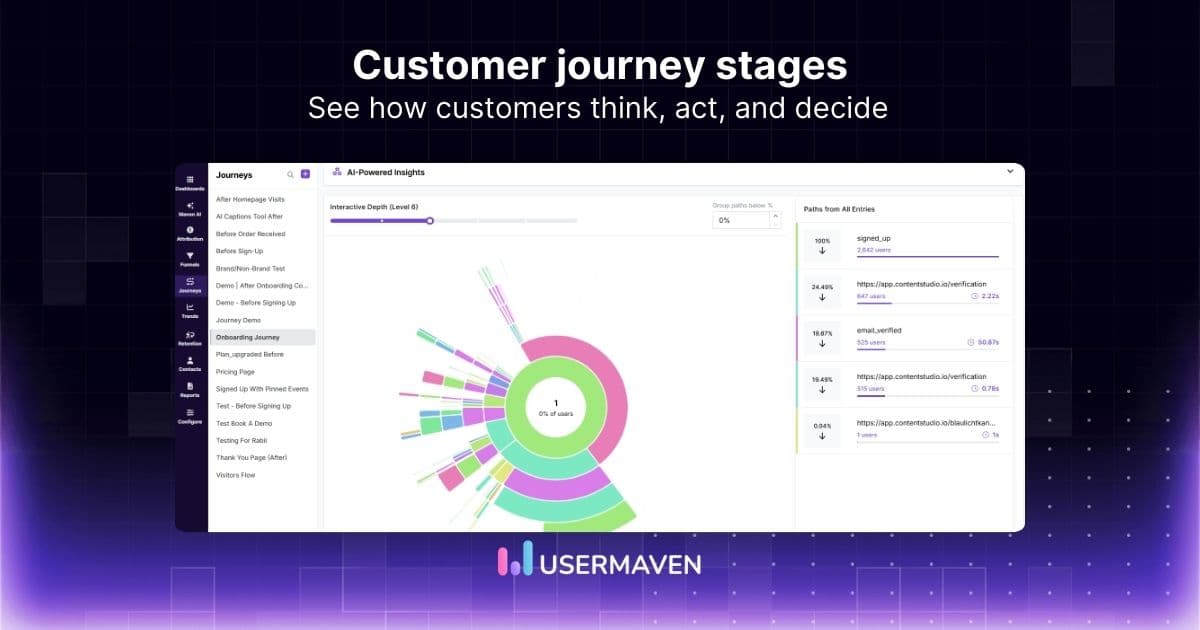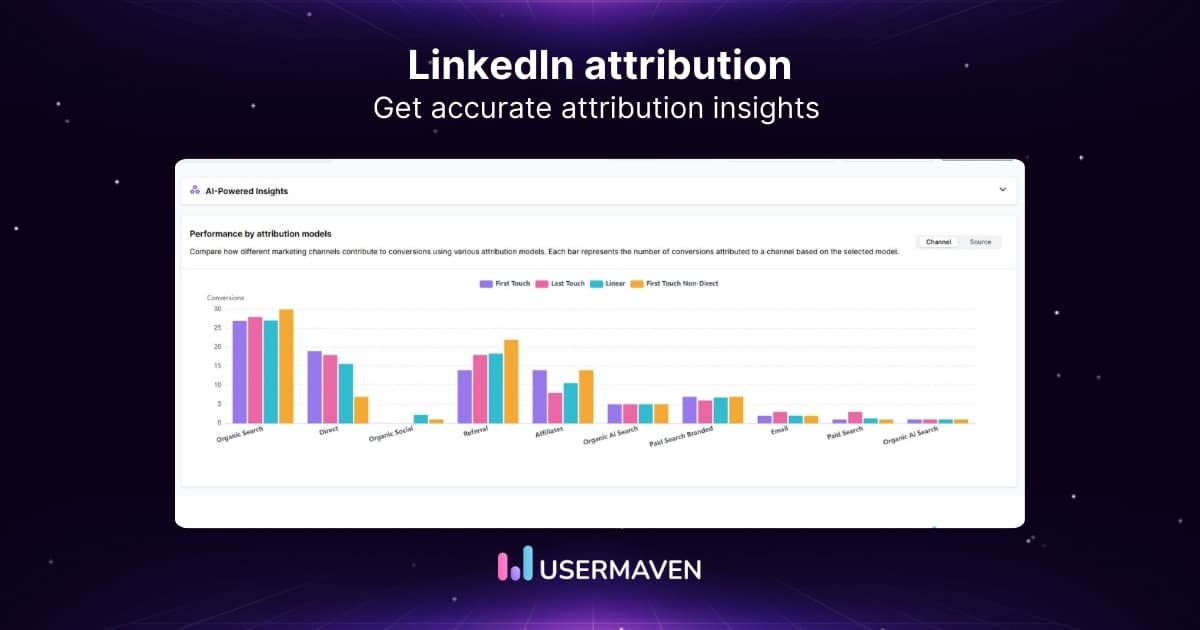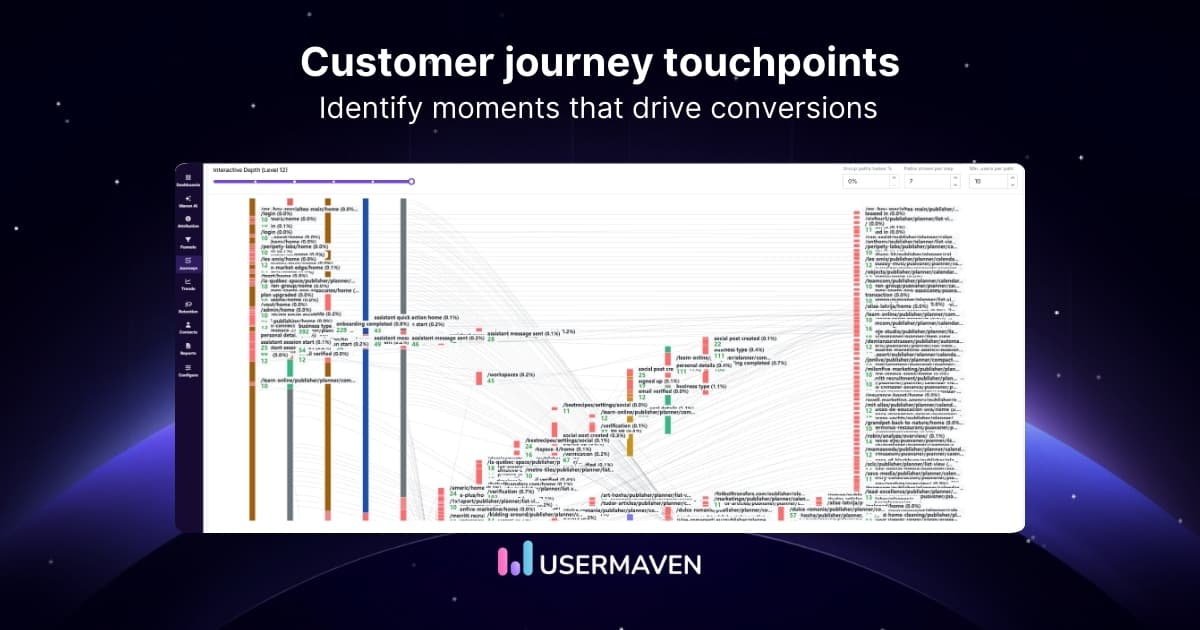How we made $120,260 in 3 weeks of launching our SaaS
Dec 19, 2022
7 mins read
Written by Usermaven

This is the story of our SaaS startup, Usermaven – a privacy-friendly analytics tool for product and marketing teams, that was able to generate $120,260 in revenue in just 3 weeks of public launch without external investment, paid ads or Appsumo.
I am going to cover everything we did during this journey.
- How we got the idea to build this SaaS
- How we got beta users and validated the idea
- What channels we used to drive visitors to our website
- Why we decided to do an LTD and how we did it without Appsumo
- The best practices of running an LTD campaign
- Traffic stats, revenue figures, and everything in between is revealed
So buckle up and get a cup of coffee because it’s going to be a long and interesting read.
The idea and how it all started:
It all started about 18 months ago, when my two co-founders and I began working on Usermaven, a no-code analytics and attribution tool designed for simplicity and ease of use.
To be honest, our frustration with the difficulty of setting up analytics for our other SaaS products (doing 7 figures in ARR), ContentStudio and Replug, was the main driving force behind developing an analytics tool.
We searched high and low for an analytics solution that was easy to use and didn’t require a degree in computer science to set up.
But unfortunately, all of the options we tried – Mixpanel, Amplitude, and others – fell short. They were overly complex, hard to configure, and a huge time-sink for our team.
Every time we made a change to our website or product, we had to ask developers, product managers, and marketers to reconfigure event tracking and reporting.
This was time-consuming and often got put on the back burner, so we never got the meaningful insights we were looking for.
That’s why we decided to build a simple solution to this problem.
The basic tool we built in-house provided insights in just a few clicks, and as we continued to add new features at the request of our product team, Usermaven gradually became our go-to solution for driving business growth and product success.
We were able to answer a lot of questions such as:
- Which traffic sources or campaigns are bringing in the best customers?
- How many people signed-up last week and how many completed onboarding?
- How many of those onboarded users reached the activation stage?
- Which feature in the product is being loved the most and which is causing user fatigue?
- Who are the power users of a specific feature/module?
- Who are the slipping-away users we can interact with to reduce churn?
And much more…
Now comes the real struggle.
Getting beta users, validation and pre-launch
When a product is used internally rather than by actual users, the experience can differ because internal users may have varying levels of expertise and perspectives on the product.
Internal team members may understand the product’s features and limitations better, and they may be more forgiving of any bugs or issues.
Real users, on the other hand, may not be as familiar with the product and may be less patient with any problems they encounter.
As a result, the feedback and usage patterns of real users may be more representative of the broader market, providing us with valuable insight into how the product will perform once it is officially released.
So, we started different initiatives to get the word out as early as possible to find beta users and validate the idea.
Step 1: Early beta access opt-in landing page
We began by creating a simple landing page to start adding people to the waiting list.
We kept it super simple here with a heading, sub-heading, 1-field form, and some images.
Once the users filled out the form, they were taken to a Typeform survey where we collected more information;
- About their business
- Their current role
- What’s the biggest problem they are facing with analytics
- What kind of solution they are looking for
- Which products they are using or have used in the past
And the last step of the survey was connected to a Calendly booking page where we offered them to have an early look inside the platform over a demo call.
We received 96 survey submissions and were able to book more than 30 demo calls with founders, product managers, and marketing teams.
The feedback we got by talking to these people was invaluable and helped us shape the product in a much better way than we thought.
Step 2: Getting traffic to the beta access landing page
Now, you might be wondering. how did we bring traffic to our landing page?
i) Asking friends in the industry: To start with, I reached out to people I was connected to on various social media platforms (via DMs) who fit the ideal customer profile.
ii) Facebook groups: Next, I utilized various Facebook groups related to SaaS businesses to generate more awareness about what we were building.
Here are a few of those groups:
- SaaS growth hacks – 30k+ members
- SaaS founders – 13K+ members
- SaaS Products and Marketing – 23k+ members
- SaaS Warrior – 6.3K members
And here’s what I posted there:
The idea behind this post was to provide assistance with setting up analytics for as many people as possible, as we recognized that the process can be challenging for many individuals.
Additionally, I believe that people generally prefer to receive guidance and support when tackling complex tasks, and this is especially true when it comes to setting up analytics.
This was by far the best channel for us!
iii) Producthunt Ship: We tried a few other ways to get more beta users. First of those places was Producthunt Ship where you can list upcoming products that are in the making.
Producthunt Ship has free and paid plans. We opted for the paid plan at $79/month for 1 month and got 61 beta subscribers from this promotion.
However, the quality of subscribers was unsatisfactory for us because there were more enthusiasts than the founders, marketers, or product people we were looking for.
iv) Betalist: We also tried Betalist, which is a community of makers and early adopters.
Betalist also has a free and paid listing option. We opted for the $299 (one-time) paid listing plan because we wanted to skip the waiting queue and also getting featured in the newsletter seemed like a good option.
However, the results were not convincing. We only received 9 beta signups from Betalist, which was disappointing because we had better results from our previous product listings there.
v) Indiehackers: Another initiative that I started but couldn’t keep-up was to share our progress and key milestones on Indiehackers which is a community of founders and developers sharing their projects and stories.
I think there is a huge potential to generate traffic and sign-ups from Indiehackers if you can share stories, milestones, growth hacks, successes or losses consistently to involve other people in your journey.
The key to success on Indiehackers is to be consistent and share whatever knowledge or learnings you come across during your journey.
It was a shortcoming on my end to not be able to post consistently on Indiehackers and I definitely plan to be more active there.
vi) Slack communities: We also tried to get the word out in some of the Slack communities related to SaaS and PLG (product-led growth). This also worked really well because we were able to make personal connections by participating in the discussions and then requesting permission from the admins to make a post inviting beta users to our website.
A great list of Slack communities categorized by niches can be found here.
Public Launch with a special offer
After doing everything mentioned above, Usermaven started getting some traffic but the numbers were still low.
The traffic spiked on some days when we did something extra like posting in social media groups, sending a newsletter, or if someone else mentioned us on their social media profile.

Traffic stats before the public launch
We had not yet generated any revenue because our primary focus was on developing an outstanding product and building an audience prior to its release to the public.
Due to the fact that we did not receive any outside investment, we were also very lean with our spending.
However, we realized that we need to do something special in order to generate the funds we need to grow further, whether through revenue or external investment.
As, we have been successful in bootstrapping our previous products, we didn’t want to pursue venture capital funding for Usermaven at this time.
So, we had to quickly find a good amount of customers and an offer they can’t refuse.
And, that brought us to think about doing an LTD (aka lifetime deal).
The LTD campaign
Many people in the SaaS industry believe that LTDs are a bad idea. However, in the past few years, we have seen a number of SaaS products, including our own and Lemlist, Instantly, Sales Flare, Better Proposals, Findthatlead, Expandi, and many others, grew fine with recurring revenue after the lifetime deal.
That is why we decided to do one quick LTD before starting the MRR journey.
The goal was to generate enough revenue to put the company in a stable position for a year or more, pace up the development, and spend on marketing.
However, we wanted to obtain only a small number of lifetime customers who could provide useful feedback, become enthusiastic advocates, and help us with word-of-mouth marketing – without overwhelming our ability to support them over the long term.
There are several different platforms to run an LTD campaign such as;
But, we choose a different route.
And that was….
running the lifetime deal on our own without using any 3rd party platform and we did this for three reasons.
- We didn’t have to share 30% to 70% of the revenue with those platforms as per their terms.
- We could manage lifetime pricing plans and limits according to the goal we had in mind. Our highest plan was for $999 and brought us the most revenue.
- We got the payment directly to our bank account and didn’t have to wait for 30 or 60 days.
Here are the steps we performed to run this campaign:
We set up a long one-page landing page that had everything we wanted to convey to our audience. The main components of a successful landing page for lifetime deal are:
- Clear call-to-actions leading to just one objective i-e; purchase.
- Demo video of the tool.
- Make the deal time-bound and add a timer.
- Limit the number of codes you want to sell to create urgency.
- Testimonials and lots of them (if available). We got these from the beta users.
- Pricing plans at least twice on the page.
- About us section – Mention who are the people behind the product and what’s your long-term vision. If possible add a camera-facing recorded video to add more trust.
- FAQs section, keep updating this section as you get more questions during the campaign.
Once the landing page for lifetime deal was ready, the next step was to figure out how are we going to bring traffic to it. Here are a few things we did:
- First and foremost, we informed the beta subscribers we had onboarded and sent them a sequence of emails about this campaign.
- We found FB groups where lifetime deal audience hangs out. We contacted the admins and gave some of them special lifetime accounts to promote us in their groups so we didn’t have to share any revenue. There are lots of amazing admins running these groups and you’ll be surprised to see how helpful they can be. For us, the biggest revenue-driving Facebook groups were:
3. We sent an email to our existing list of subscribers from our other products. People hate cross-promotion of products so we kept it to the bare minimum (3 emails in total) to get the word out without annoying those subscribers.
4. We took it to Twitter and started posting about our product and deal in relevant threads without being too spammy.
We were able to reach our goal of $100,000+ with the above channels so we didn’t explore other channels.
However, if we wanted to get more lifetime customers and revenue, we would have explored the following other channels;
- Facebook ads
- Influencer outreach on Youtube
- Onboarding affiliates to promote our product
- Posting on relevant forums
Some other important things to consider while running an LTD campiagn are;
- Prepare a list of potential Q&A internally before launching the campaign and keep adding more as the campaign progresses, this will help answer the questions quickly over support channels.
- Create comparisons with other similar tools in the industry. Because, you’ll get a lot of “how does it compare with X’ type of queries.
- Be proactive on support channels and help the users as much as you can.
- Make sure the onboarding of the tool is smooth to avoid extra burden on support. We worked a lot on this.
- Install an analytics tool from the start to track user behavior and analyze patterns. We were lucky we had Usermaven to do this job for us.
- Tweak your pricing plans based on the feedback but make sure the ‘benefit vs cost’ makes sense. And you don’t accept everything because the LTD community brings a lot of well-coordinated pressure.
The numbers
We were quite successful in hitting the numbers we initially aimed for. Our initial goal was to sell around 300 slots and make $100,000+.
But, we were able to surpass our goal and make $120,261 from 373 customers.
We offered a 30 days refund guarantee and had a roughly 5.7% refund rate, which is well below the average refund rate for LTD campaigns, giving us further confidence that customers loved the product.
So, we were able to generate net revenue of $113, 414 from the LTD campaign.
If we look at the website analytics, we can clearly see the impact of the campaign on the traffic it brought to our website.

Traffic stats during the lifetime campaign
Overall, the LTD campaign was really an amazing experience and we’re super happy to have done it!
Because of the overwhelming amount of helpful comments and support we received, we now have a wealth of resources, ideas and use cases to bring to the market in the near future.
If you are still in the early stages of your company’s development and are struggling with getting new users and have the feasibility to do an LTD campaign, I strongly encourage you to do so!
Our journey beyond the LTD campaign
Since we ran the LTD campaign, there has been a noticeable increase in the number of visitors to our website each and every month, which is very promising. Traffic stats after the lifetime campaign
Also, we now have a solid roadmap based on the feedback we received from the customers.
More importantly, we have been able to expand our team from just 3 co-founders to 6 people in the team.
That’s why, we were able to pace up our development and we shipped more than 25 new features in the past two and half months making our tool a solid competitor to Mixpanel (for product analytics) and Google Analytics (for web analytics) with a better privacy-focused and no-code approach in the analytics market.
Our MRR is currently around $950 and a lot of new signups are on the Starter (free forever) plan but we think that we’ll be able to convert a good percentage of those to the paid plans in the near future by further enhancing the value we provide in the paid plans.
We’re still working on perfecting both our product and our marketing, but we’re confident that we can compete with big players like Mixpanel, Amplitude, or even GA4 — we have a vision and a solid team that will help us achieve that.
If you’d like to see how Usermaven can massively reduce the effort in getting insights for your marketing and
product teams without any extra coding, then sign-up for a free account here to test-drive it yourself.
Try for free
Grow your business faster with:
- AI-powered analytics & attribution
- No-code event tracking
- Privacy-friendly setup


